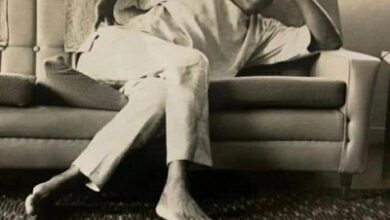Of bread, cinema, photos and Ilorin reminiscences, By Is’haq Modibbo Kawu

I HAVE spent the weekend in Ilorin, after a week’s visit to Maiduguri. And that included my birthday, September 5th, which meant that, for the umpteenth time, I was away from my family, on the eve of my children’s return to school for the new session. When I tell my friends that I carry the gene of travel as a good Fullo, the fact that I always seem to travel just underlines the issue.
And living in three cities, Abuja, Ilorin and Kaduna, completes the nomadic enigma of my life. But whenever I return to Ilorin, I reflect deeply on the changes that our anarchic form of modernity has wrought on the community where I grew up and one that I love with a passionate intensity. It is that love and the knowledge I have at how things have evolved that drive my unending search for rectitude for our community.
And any conscientious chronicler of the changes our urban space has witnessed will know that the period since 2003 has seen the most irreparable damages to the structure, values and ethos of our community. The consequences of the negative social engineering associated with politics, governance and impunity since 2003 will haunt us into the future.
This realisation provided the backdrop to the explorations that I do on the shores of hindsight and the trigger to write the piece today, came from an innocuous signboard on the Murtala Muhammed Road in Ilorin. And there it stood at No 41; the signboard of MAFAROSERE BREAD! Now, from the 1960s, that was THE bread to eat in Ilorin, because it was by far the most popular bakery.
And it was clearly an expression of the evolving culinary culture of the community that bread was increasingly becoming a vital part of urban taste in Ilorin. MAFAROSERE BREAD was therefore uniquely placed to profit because it was located in that part of the city with a lot of people working in modern establishments: railways; post and telecommunications; electricity and government offices. The other popular bread was OWODUNI BREAD, located in the Ita Onitanganran area of Ilorin’s heartland and was owned by an intrepid Ijebu businessman Alhaji Owoduni.
By the beginning of the Twentieth Century, Ijebu businessmen were becoming prominent traders in Ilorin. They were “factors” for the big colonial companies and traded in shoes, bicycles, clothes and so on. They included S. A. Ibironke and Oshinaya. And of course, Alhaji F.A Sadiku, whose FAS SUPERMARKET, provided the earliest experience of modern supermarket culture in Ilorin.
The children of these great merchants became prominent members of the community, with many of the females marrying into the Ilorin community. Kunle and Rotimi Ibironke and the late Segun Oshinaya, were some of the friends we made from childhood and they were part of the Ilorin experience that is now lost!
If bread provided food for the stomach, then the cinema offered very early peeks into an exotic world and an opening of the mind to the cultures of other lands. These had three expressions in old Ilorin. The first was the only cinema house in Ilorin, PALACE CINEMA, located a stone throw from the Emir’s Palace. The fare was standard: endless romantic Indian films and their songs; the American cowboy films and war films.
There were intriguing issues associated with the little knowledge people had of the culture of cinema; that was the fact that the censors board often removed from films violent and sexually explicit materials. That led to ‘jump cuts’. The audience responded by raining curses on the film operator who was crippled in one leg.
They genuinely but ignorantly believed that he deliberately removed scenes from films to send them home early! By the middle of the 1970s, with the emergence of Bruce Lee, Chinese films entered the repertoire and children of my generation found a new love in the Kung Fu art!
Today that film house is literally dead and the experience of sitting inside the darkened hall as films rolled is lost; what was also lost was the comical sight of people who slept through the films, but beseeched a neighbour to “please wake me up during the finale (EJI MI TOBA D’IJA THE END!)!
Mobile film unit: The second cinema experience came through the Northern Nigerian Information Ministry’s mobile film unit. They arrived on a three or six weekly interval with films showing developments taking place in Northern Nigeria, in education, healthcare and other activities of the regional government.
The other mobile films came every three weeks and these were often old Westerns and cowboy films from the silent era. A commentator gave a blow-by-blow account of proceedings. At selected intervals the film people then advertised their drugs. I am not too sure they sold very much but the entertainment value that they brought into the community was immense.
The films were nicknamed “IYA JEN RIRAN (Mama please let me see!). We were always primed for the shows especially because the mobile film vehicles went around and from the mounted public address system they announced the content of their films. That was also the duty that was performed by Ibrahim Dan Boyi, who was the live mobile film advertisement board for PALACE CINEMA. He was the ultimate showman: dressed like the most popular Indian actors of the day and with the pointed “Abdul” shoe to match! He was a perennial presence at social events, school annual entertainment shows and local football marches. The board slung around his neck would carry posters of the film of the day and when it was a war film, Dan Boyi would caution people to ensure they were not in white when they came to the film house that night. People would ask why not. And he would hilariously answer that there might be blood splashing in all directions! That man is still very much part of the social scene in Ilorin today and is a walking encyclopedia of the social history of the past sixty years in the Ilorin community.
Photo studios and photography: The final part of that jigsaw for me was photography. By the 1960s, photo studios and photography had become very important aspect of social life. OLAIYA PHOTO; OYES PHOTO (the signboard is still hanging in Ilorin) and DANSCO PHOTO are some that I remember vividly. They described themselves as “DAY AND NIGHT PHOTOS”! They attended birthday parties, ‘freedom’ events for artisan such as tailors and other social events, armed with a camera that was often mounted on a huge “duo pod” (tripods came later).
Square films
They carried plank like square films that were inserted into cameras that had triggers for the shot and there was always a cloth backdrop like a cyclorama. Everybody was encouraged to pose in particular ways, often with one hand on top of the other, while you were ordered to look straight into the camera (to see a bird!) and to also smile! The photographer deepened the myth, with a red cloth that covered his head as he adjusted the camera lens several times before triggering.
Not long after, taking photos in the studios took a life of its own. There were artistic backdrops and I think my favourite was the airplane with BOAC (British Overseas Airways Corporation) emblazoned on the plane and plank staircases mounted so that the person posing for the pictures could have the illusion created that he was climbing into the BOAC plane! Some were even more adventurous and the plane door was actually slit open and the person taking the picture went behind the backdrop and head will pop out, as if he were in the BOAC plane! Sometime there is a second person on the other side shaking hands with the man ‘inside’ the plane.
The greatest mystery of photography was of course the “dark room”. No one seemed to know what really went on inside, and I was very curious too. It was a young Igala boy that became my friend, and was an apprentice with DANSCO PHOTO on Niger Road, opposite the famous Niger Hotel (I have to write about that premier hotel in Ilorin someday), who helped me through my curiousity. John Ebiloma took me into the dark room and showed me that final piece of the photography jigsaw of my childhood. Those photographers were chroniclers of the evolving social graces of their times in our community. The old black and white pictures from the 1960s are very useful in telling the stories of our encounter with modernity and the sureties associated with the lived experiences of that period in our communal and national history. I was very lucky, because my mother just kept a record of my life from very early and I have those pictures from when I celebrated my first birthday. And I have attached that picture to the piece for this week.
Scare of a disappearing past
The Ilorin community that I grew up in was still relatively smaller than the huge urban jungle that it has evolved into. We were lucky up to a point, because a succession of governments from the old Northern Regional Government, through the military administrations of Colonel David Bamigboye and especially the late Colonel George Innih, did a lot to create an admirable infrastructural basis for the modernisation of the city. That was also taken to a height by the military administration of Ibrahim Alkali.
When civilian rule returned in 1999, the late Governor Muhammed Lawal, being conscious of his origins as a bona fide son of the community, tried in his own way to renew some of the infrastructure of our community. But political party periods of civil administration often stoke the basest instincts in people and by 2003 we entered a new stage that has remained till today.
A negative trend of social engineering has been the motif of this phase in our collective history. As Marx once said, everything solid melts away. We have been at the receiving end of a culture of impunity. Communal ethos were degraded and set to naught, while a deliberate divisiveness was implanted within the community that has seen the destructive erosion of values that used to glue the community together.
Poverty has become a weapon of control as well as an object of manipulation of the people. When I move around Ilorin today, it is the dysfunctional social existence that scares me most. It is the worry about the present and scare about what the future holds negatively, that makes me hold ever more firmly to a memory of the wonderful culture of a disappearing past, as an expression of my personal resistance against the manner our community has been deliberately impoverished, materially and spiritually, under the reigning hegemony and hegemon in our city. Believe me there used to be a city!
-Moddibo-Kawu, former Director-General of National Broadcasting Corporation first published this article in Vanguard Newspaper in 2015




